Humble Beginnings
Boise State University’s Master of Business Administration (MBA) programs have a rich history and substantial impact on the community. Business education at Boise State began when Boise Junior College (BJC) became a public institution in 1932. Despite the United States going through the Great Depression – one of the longest economic downturns from 1929 to 1941 – both the city of Boise and its junior college were growing.
The Path to Graduate Education
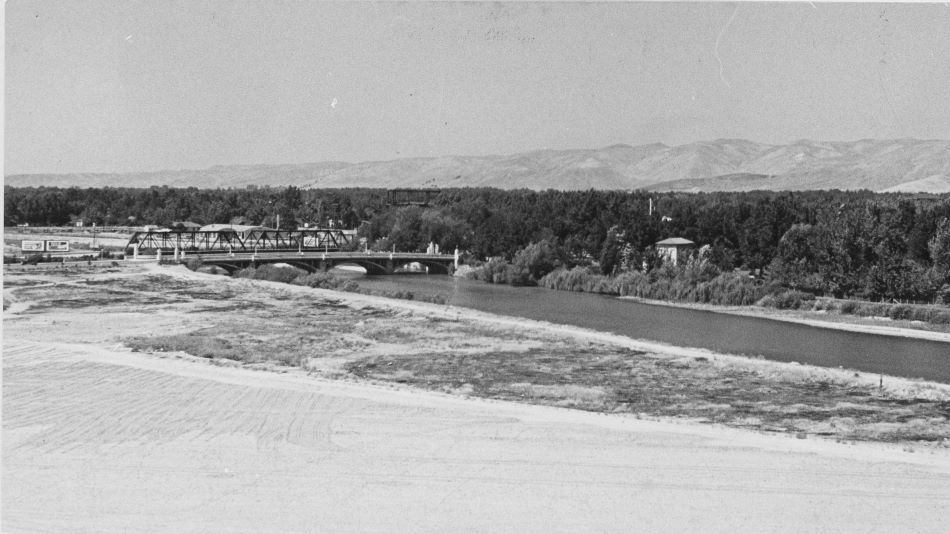
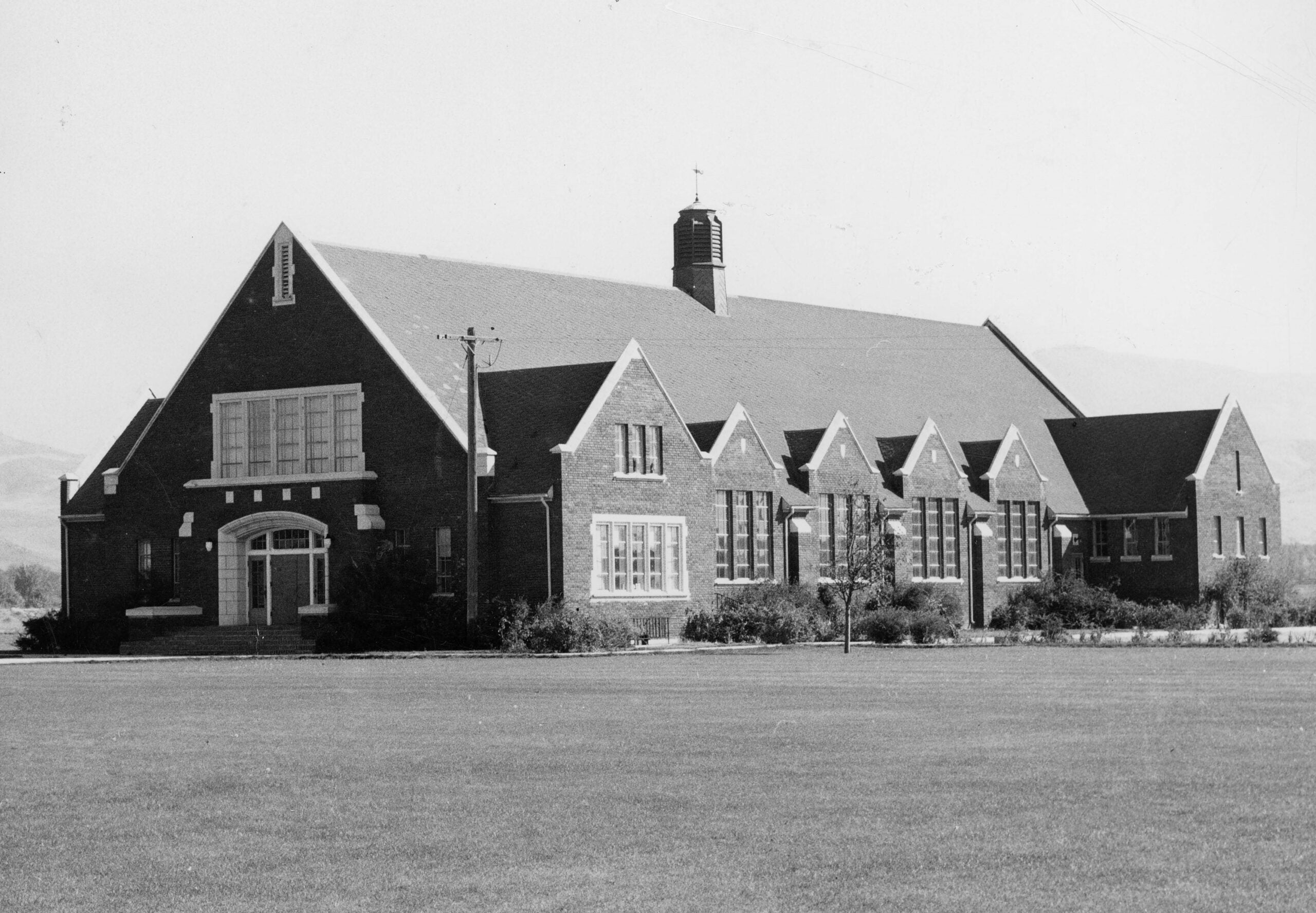
BJC’s student enrollment steadily increased and was renamed “Boise College” in 1965. Two years later in 1967, the first four-year bachelor’s degrees were awarded. In 1969 Boise College became an official Idaho state school and was renamed to “Boise State College.”
Boise State College and its business education grew quickly. A new business building (now known as “Riverfront Hall”) was constructed in 1970 to accommodate students wanting to pursue their undergraduate degree in business. During the same year, the Graduate School of Business was established, paving the way for the development of the college’s MBA degree. The MBA was one of the first of two graduate-level programs offered at Boise State College, along with the Master of Elementary Education.
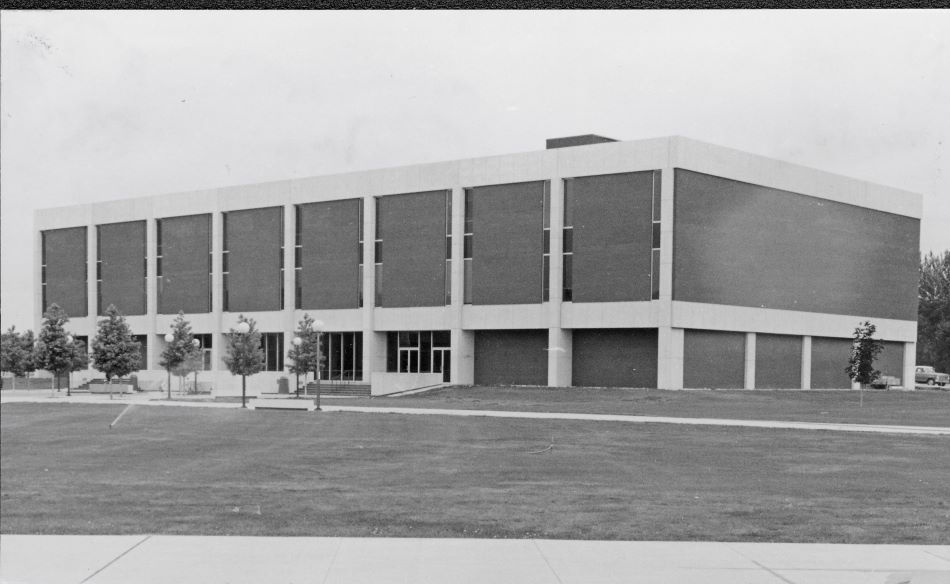
In the early 1970’s the MBA curriculum consisted of a minimum of 30 graduate credit hours: 12 core courses and 18 electives. Prerequisite courses in accounting, economics, business statistics, marketing, management, finance, data processing and college level mathematics were required for consideration of admission.
The advanced business degree emphasized the development of management generalists, rather than specialists in any one or more areas of business. The degree provided maximum flexibility beyond core requirements, with electives that were chosen in consultation with their MBA advisor. Students were admitted for the September (fall), January (spring) or June (summer) start dates and could begin in the term of their choice without scheduling difficulties.
The estimated expenses per semester was approximately $735 for Idaho residents and $1,205 for non-resident students. For students who finished the program in two years taking MBA courses in the fall, spring and summer, the total program cost was about $4,410 (resident) and $7,230 (non-resident).
Boise State College’s first master’s degrees were awarded in 1972, including the first recipients (p. 4) of the MBA degree – Robert Patterson Behling, R. Gail Heist and Francis Edwin Keller.
The Business College and MBA Growth
The MBA program continued to gain traction and grew significantly from those first three graduates to 24 graduates in 1973.
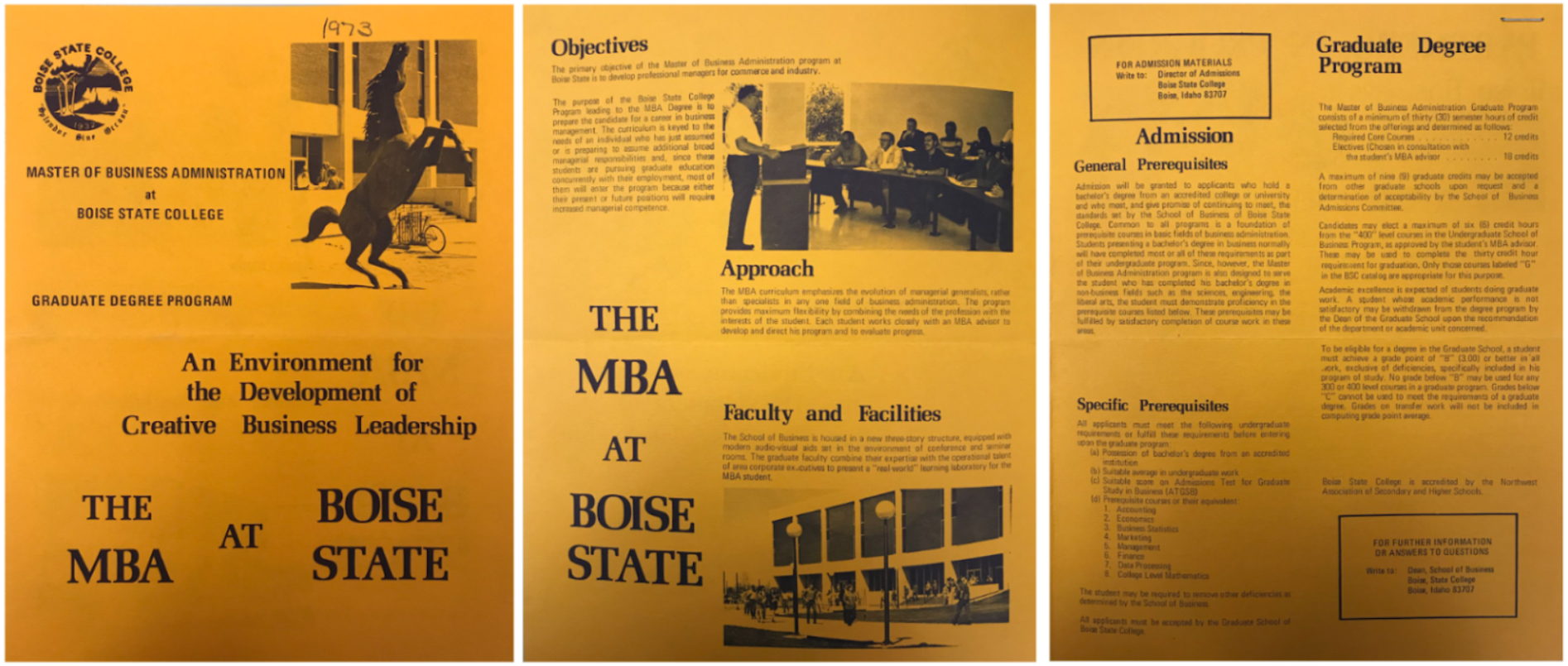
In 1974, Idaho Governor Cecil D. Andrus signed a bill that changed Boise State College to “Boise State University”, as we know it today.
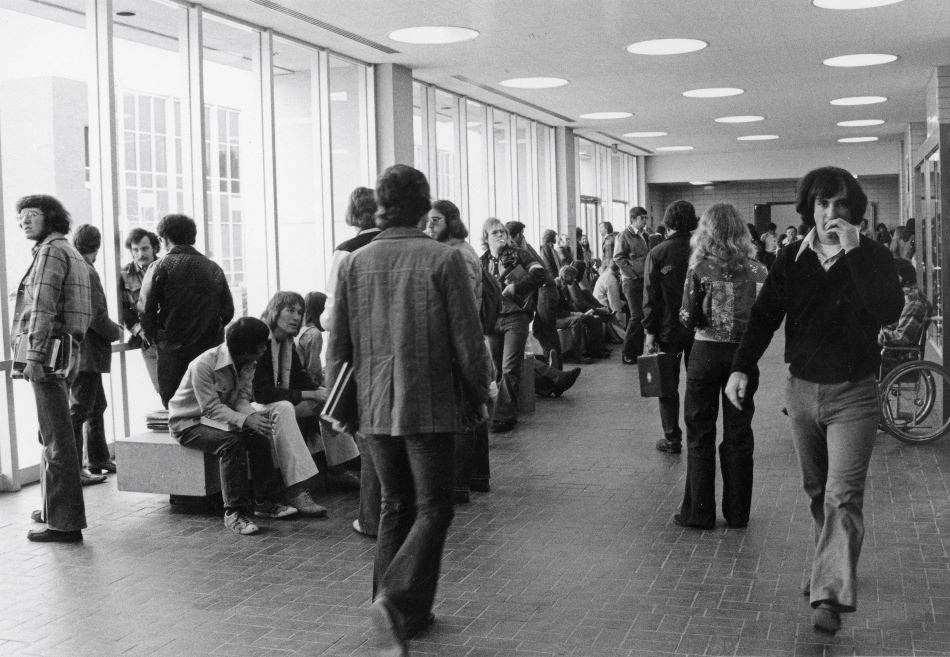
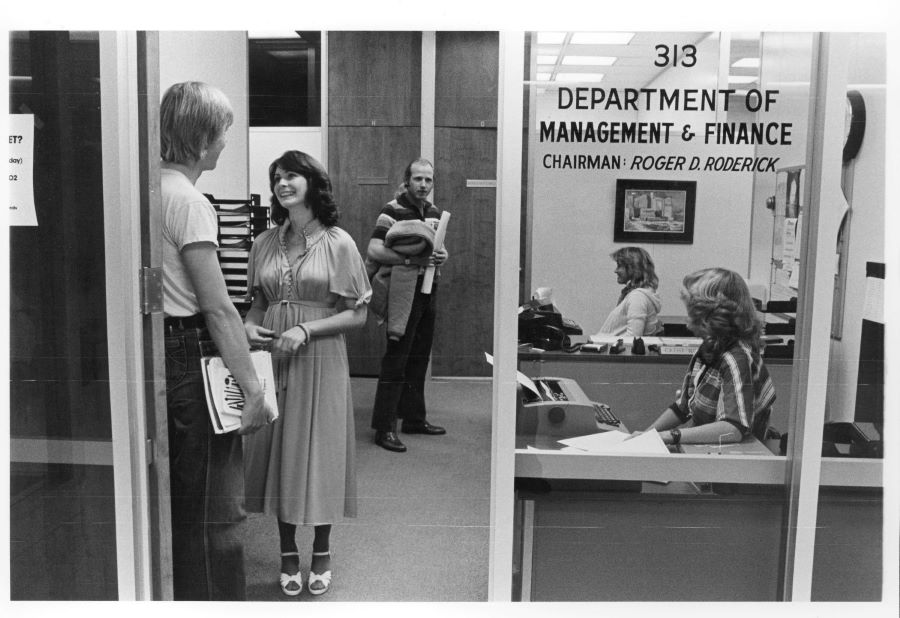
The School of Business received professional accreditation from the American Assembly of Collegiate Schools of Business (AACSB) in 1979 due to the hard work and efforts of the devoted faculty and staff. The College of Business and Economics maintains the “gold standard” AACSB accreditation to this day.
Continual Improvement
In 1986, with 14 years of MBA history in the rearview mirror, the program started pursuing continuous improvement efforts. One of those efforts was the removal of MBA prerequisite requirements (undergraduate business classes) for admission after AACSB suggestions and a market analysis of other MBA programs across the country. A Graduate Management Admission Test (GMAT) and a business writing proficiency test took the place of these prerequisites, decreasing the barriers for new student admission.
Additionally, from 1992-1995, the College of Business and Economics (COBE) proposed a revised MBA curriculum as a result of a three year effort by the Graduate Policy Committee. The rationale of the proposed changes was due to criticisms of Boise State’s MBA program. Specifically, curriculum change documents cited minimal integration across functional disciplines, a dated curriculum and student dissatisfaction.

Customizing the MBA Experience in the New Century
The University had one MBA program serving all students from its inception in 1970. However, COBE saw a need to tailor MBA offerings due to the wide variety of student demographics in the early 2000s. While some students entered the program with 20+ years of professional management experience, others were early in their careers with only one-to-two years of experience. Each of these students required an advanced foundational management/leadership degree, but the curriculum was too broad to provide a customized, graduate-level business education for both groups.
With this in mind, the Executive MBA (EMBA) program was launched in 2006 for senior level managers and executives with significant experience. The Executive MBA program was unlike any other MBA offering on the market (and remains so to this day). As documented in this 2009 article “When ‘Aha Moments’ Make All the Difference”, a group of innovative, collaborative faculty took an approach that broke traditional academic norms. For over a year, the faculty team met monthly with a group of executive leaders from local businesses gaining first-hand insights that shaped every aspect of the program.
The Executive MBA program features a fully integrated curriculum – meaning there are no siloed classes in traditional business disciplines (Marketing, Finance, Accounting, Economics, etc). Instead, courses feature a business topic and coordinated teaching from multiple professors and disciplines. Courses like “Creating Competitive Advantage” and “Rescuing Distressed Business Units” acknowledge that executive-level problems are multi-faceted and complex, and must be taught from a variety of perspectives and subjects.
Other cornerstones of the Executive MBA experience include the convenient format, 1:1 leadership coaching, an international residency, a non-profit community project, and a consulting capstone project. To date, this unique program has yielded some of Boise State’s most distinguished and successful alumni.
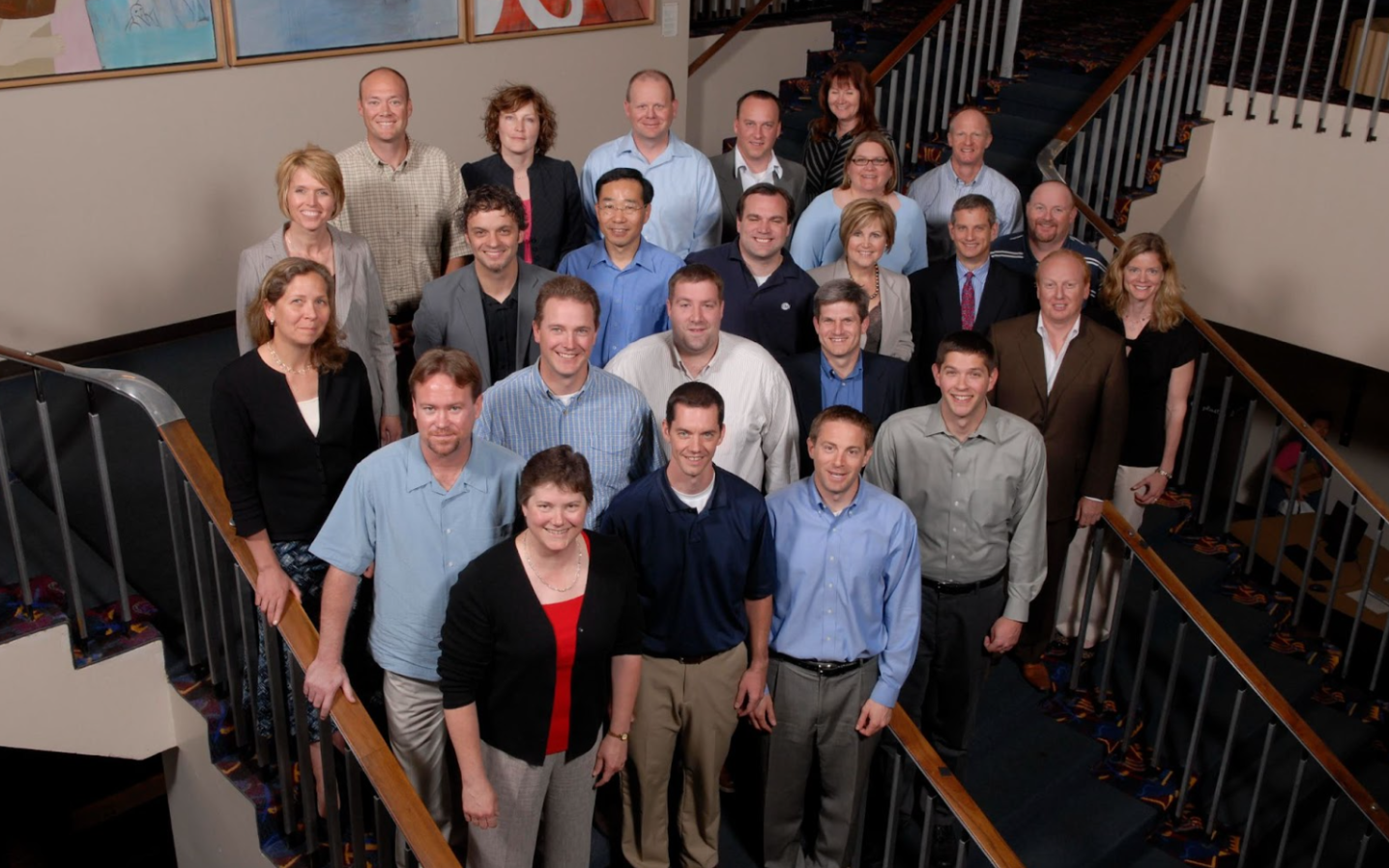
A New Home for Business Education
By 2010, Boise State’s business programs were in high demand. Luckily, more space was on the way to accommodate both undergraduate and graduate business students. After many years of planning and construction the Micron Business & Economics Building (MBEB) was completed in April 2012 becoming the new home of COBE. MBA programs found their home on the fourth floor with three classrooms and a suite of offices dedicated to graduate student education.
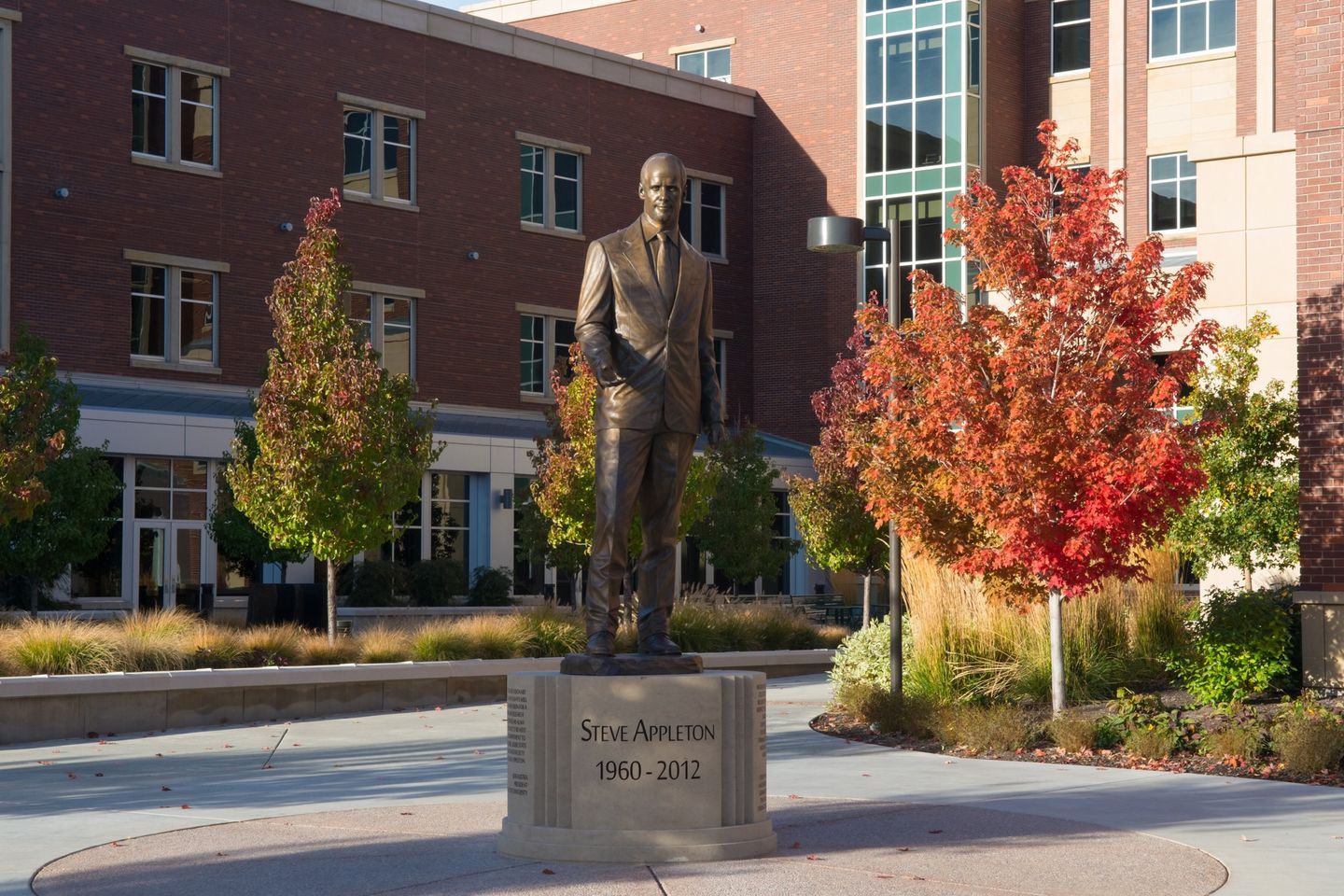
From One to Five MBA Programs
The EMBA program was a success and with more space to grow in the new building, the MBA program continued to evolve to meet the needs of its different student demographics. In the fall of 2012, the original MBA program was further divided into two additional, distinct MBA programs that targeted different levels of professional management experience – the Career Track MBA (CTMBA) and the Professional MBA (PMBA).
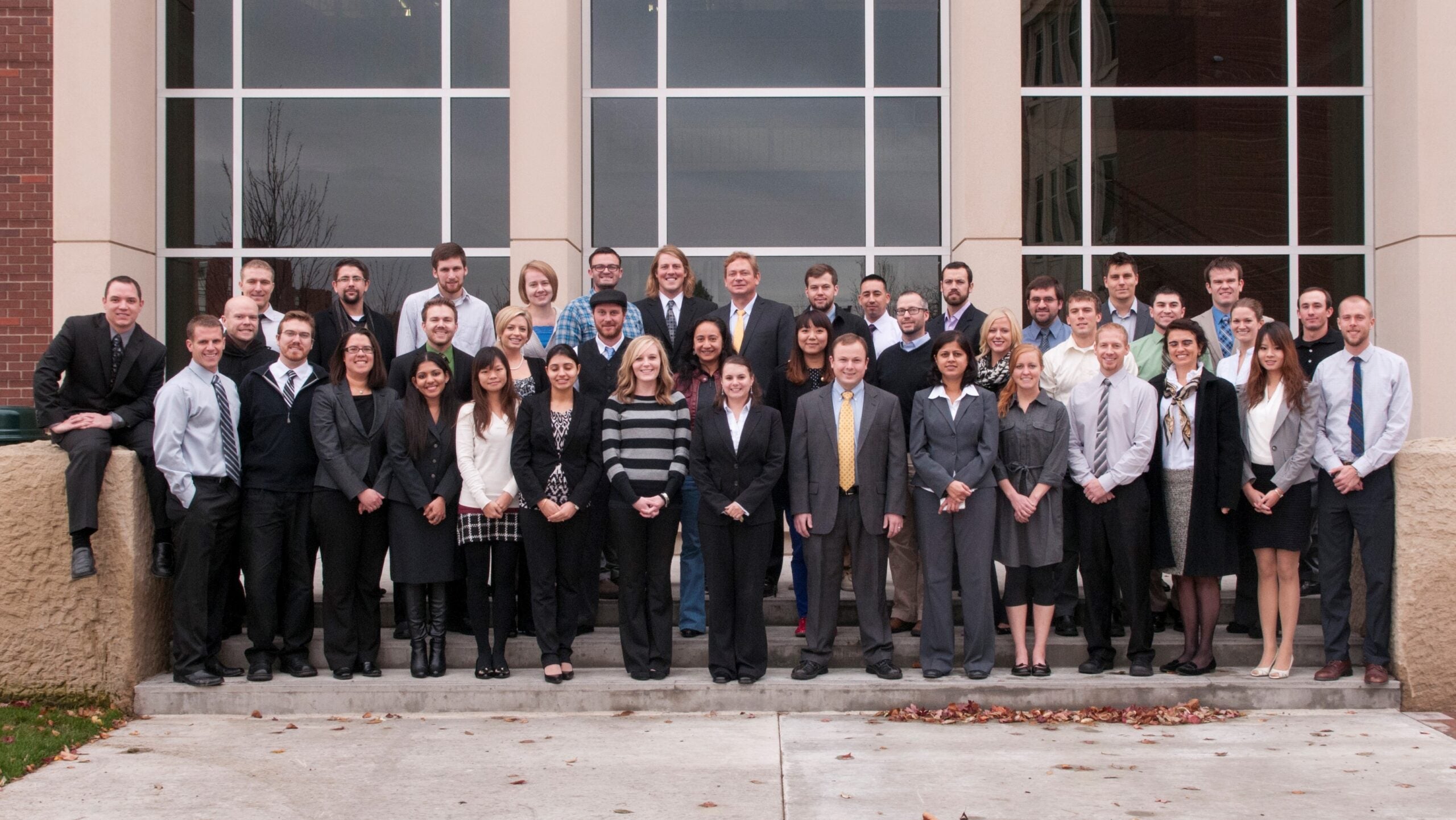
The CTMBA was designed as a full-time, in-person day program for early career professionals that required an internship as part of its curriculum. The PMBA program was launched as a part-time, evening program to accommodate mid-level career professionals with seven-to-eight years of management experience on average.
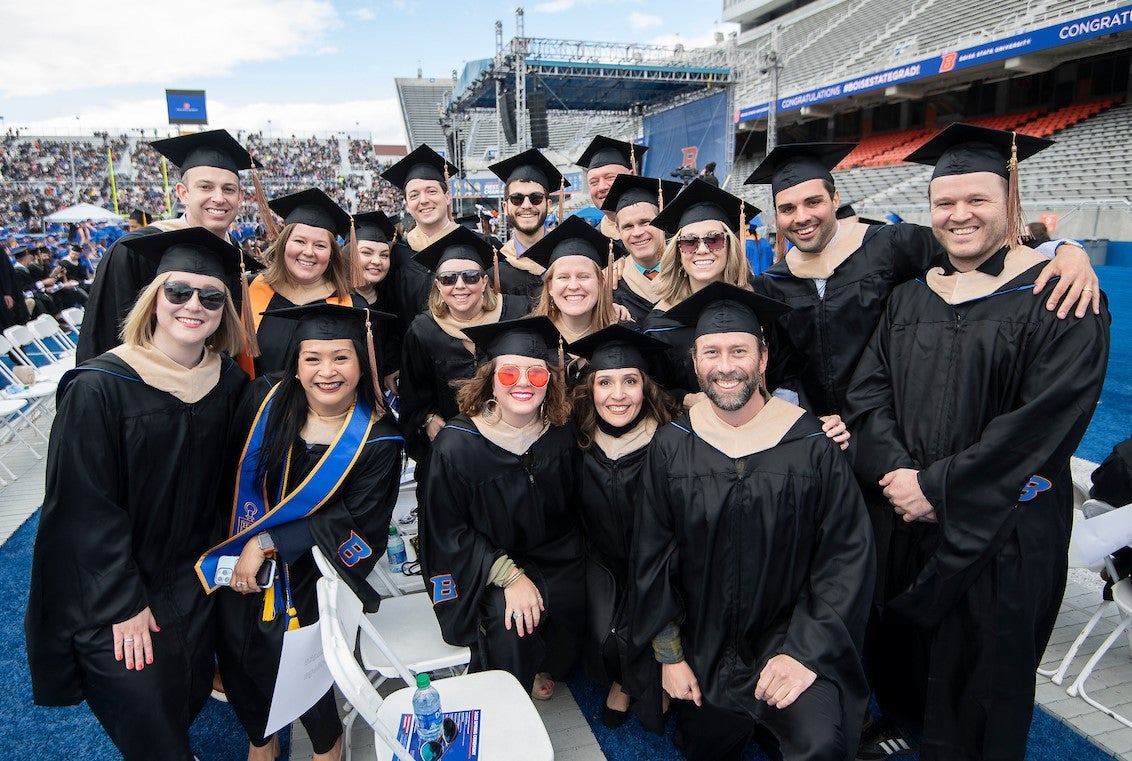
In 2013 the demand for online programs was growing significantly. COBE responded by launching the Online MBA program (OMBA) – a 100% online offering for mid-level career professionals. From 2019 to 2023, the OMBA launched seven emphasis areas for additional customization (Management, Construction Management, Healthcare Leadership, Marketing Leadership, Finance, Cybersecurity, and Business Analytics). The OMBA program was the College of Business and Economics’ first online degree and the first opportunity to bring COBE education to students across the country.
Boise State’s fifth MBA offering launched in 2015 with the concurrent JD / MBA program. This offering is a partnership between Boise State and the University of Idaho College of Law. The JD/MBA dual-degree allows students to earn both the JD and MBA degrees in three years rather than the usual four to five.
Future students can visit the side-by-side MBA program comparison for more information on which program may best fit their goals.
Fifty years of graduates and MBA impact
In 2022, Boise State’s College of Business and Economics celebrated 50 years of MBA programs. With a storied history, the programs also celebrate:
- Over 3,200 Boise State MBA graduates to-date (1972-2023)
- Continued growth in MBA degrees conferred, including the largest graduating class in Spring 2021 with 131 MBA students graduating.
- In 2022-23, the EMBA program was ranked No.15 best Executive MBA in the nation by Fortune Magazine. Competition was steep and included some of the best Business schools in the country including Cornell (ranked No.17) and Columbia (No.18).
- A re-designed Professional MBA program was launched in 2022, reducing the program from three years to two, while introducing a new hybrid curriculum and flexible start dates.
- Notable alumni – featuring multiple CEO’s, Presidents, COO’s, CFO’s, and founders.
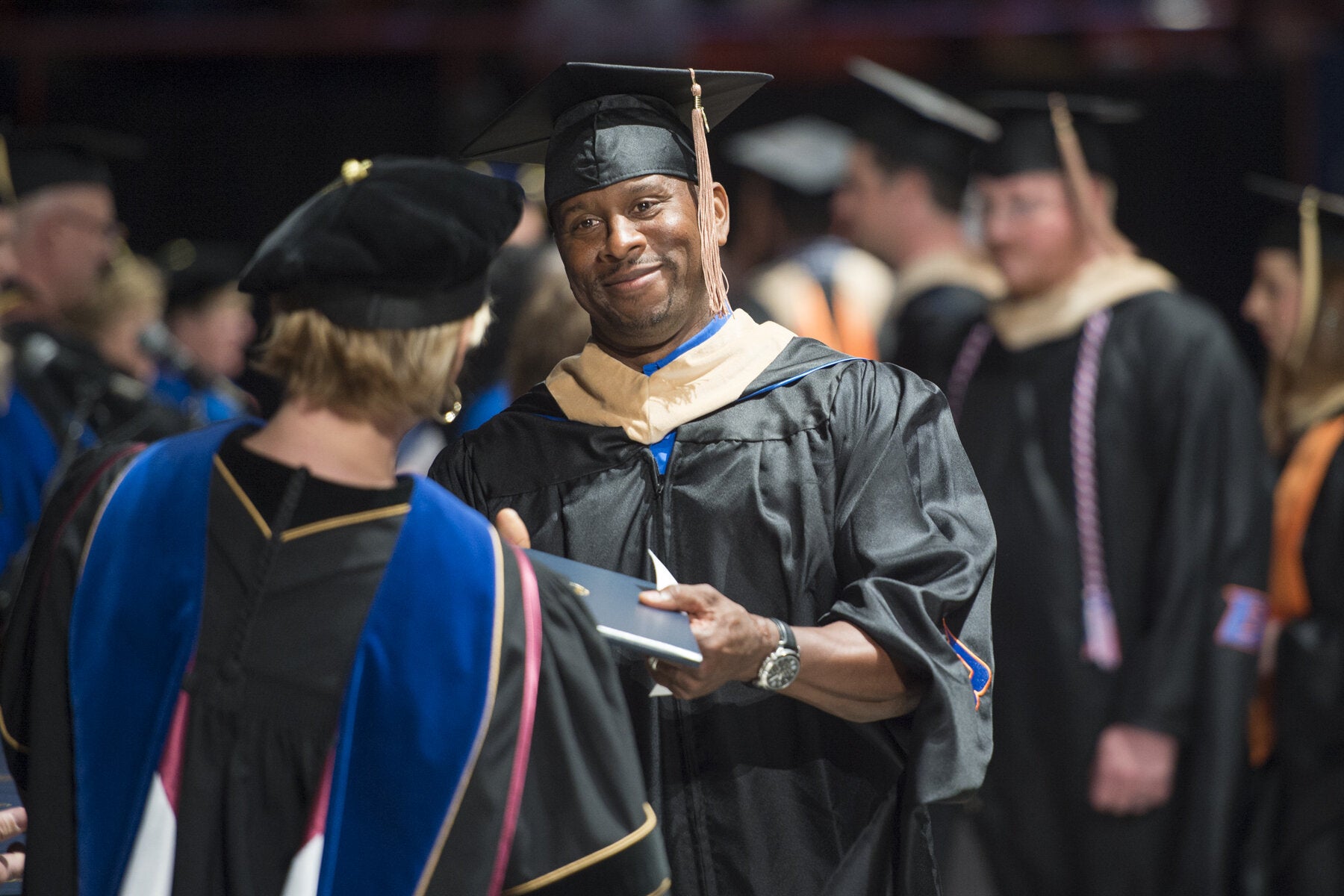
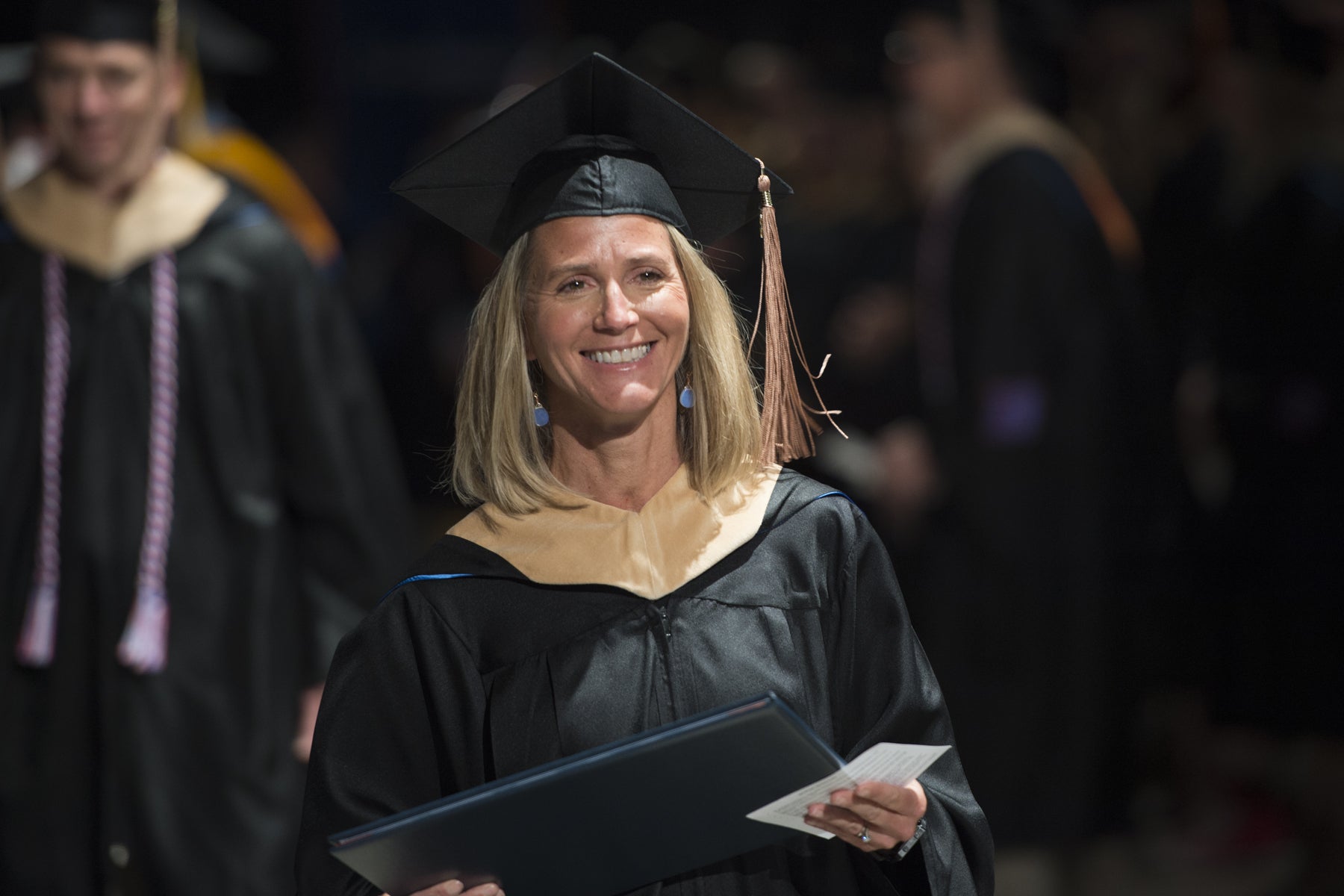
Interested in learning more about our programs, or have questions about which MBA program may be the best fit for you? Please contact Rachel Bagnard at: rachelbagnard@boisestate.edu or (208) 426-1289.
A special thanks to the Boise State Library’s Special Collection & Archives and Cheryl Oestreicher for their support in the historical sources, photos, and research included in this article. Their help was very valuable in collecting this information.